High elevation can change the candy game. Learn essential tips & techniques for high altitude candy making, to ensure your sweets come out flawlessly every time.
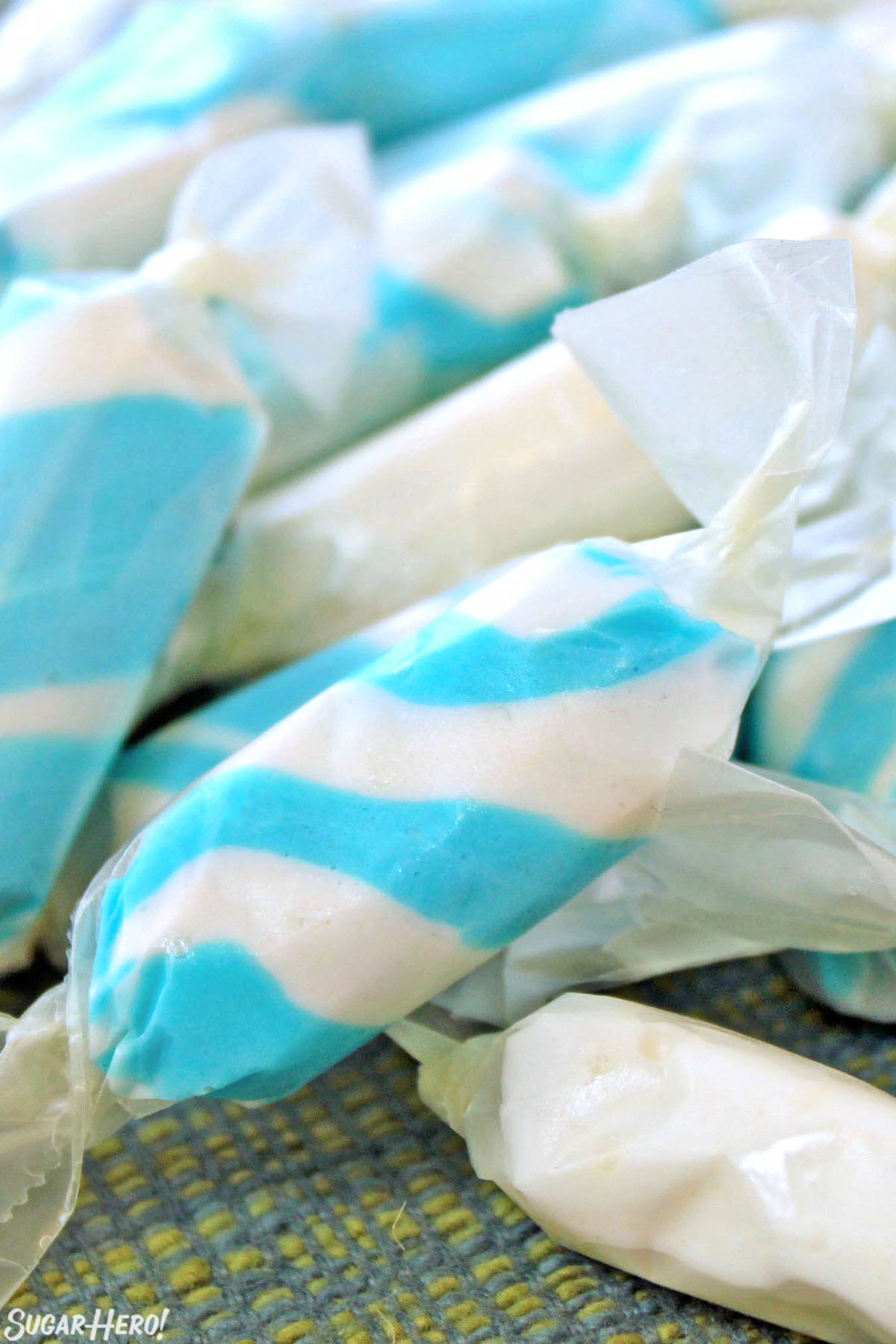
🗻 Understanding the challenges of high altitude cooking
Living at a high altitude isn’t all fun and games and sweeping vistas: it can also mean frustration in the kitchen. From deflated cakes to dense bread to burnt toffee, the unique conditions created by higher elevations can wreak havoc on otherwise-reliable baking and candy recipes.
Fortunately, there are some adjustments you can make to compensate for the effects of living thousands of feet above sea level. Armed with a little knowledge and a trusty candy thermometer, you can figure out your specific altitude conditions, and learn what recipe and temperature changes you need to make for culinary success.
This guide will cover the effects of altitude on candy-making, and provide two different ways to calculate temperature adjustments. Here’s everything you need to know to make perfect high altitude toffee, fudge, caramel, and more!
Table of Contents
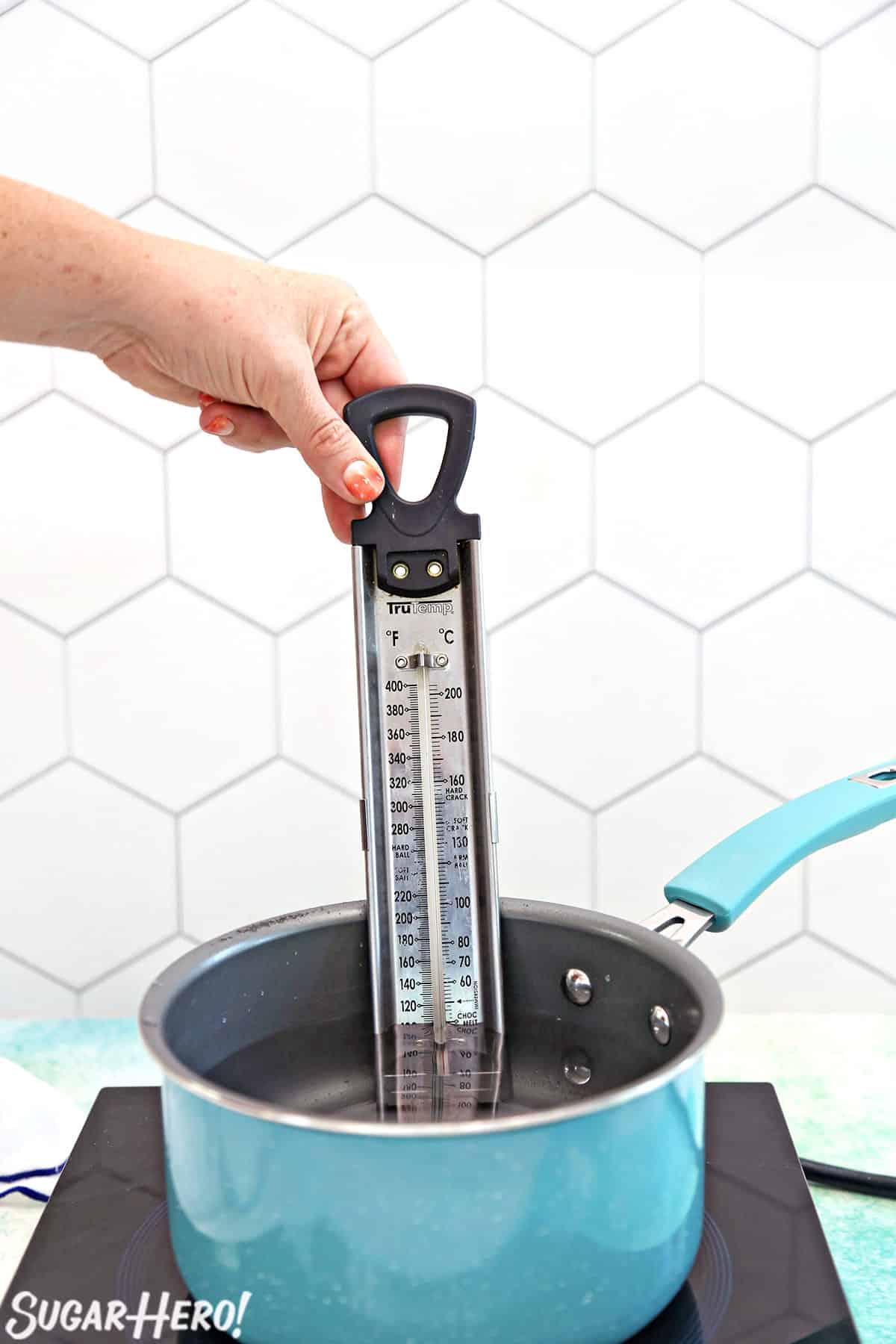
🍬 How does altitude affect candy making?
At higher elevations, water boils at a lower temperature, which can throw off traditional candy recipes calibrated for sea level conditions. Additionally, reduced air pressure can affect the structure and texture of your sweets.
What candies are affected by altitude?
When we talk about altitude and candy making, we are specifically talking about candies that start with a cooked sugar syrup, including old-fashioned fudge, caramels, toffee, taffy, and traditional fondant. Because these recipes involve boiling sugar and water together, the lower boiling point of water has a big impact on them. In these cases, you will need to reduce your target cooking temperature to account for the higher altitude. The reduction amount varies, depending on your precise elevation.
Candies that do not involve boiling water, like chocolate-based confections, aren’t affected in the same way, and you shouldn’t have to calculate temperature changes to your chocolate candies.
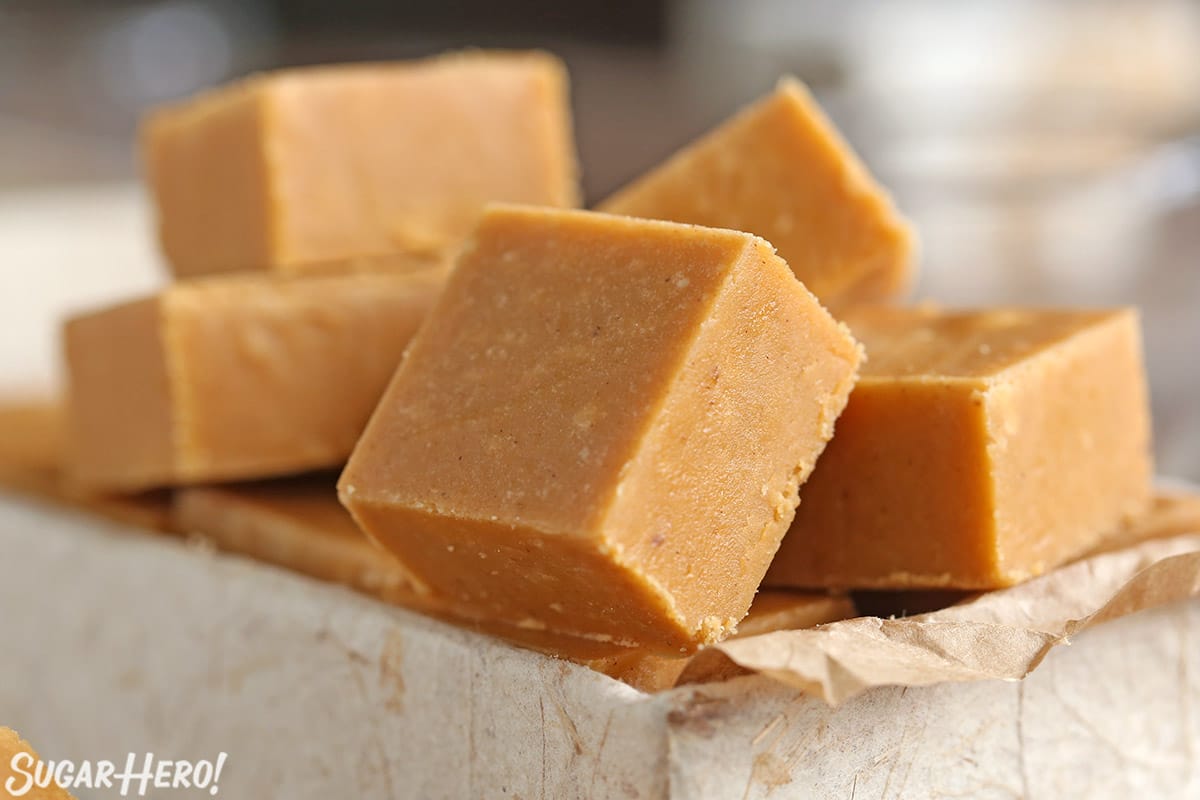
🌡Altitude temperature adjustments
There are two methods for determining your temperature adjustment: a simple formula, or a boiling water test. If you are using the formula method, you will still want to test and calibrate your thermometer regularly to be sure that it’s accurate.
The High Altitude Formula
This is the general formula for determining how to adjust your cooking temperature:
For every 500 feet above sea level, subtract 1° F from the final temperature.
Example: if you live at 2000 feet above sea level, you would subtract 4° from your recipes. If you were making a candy recipe that calls for the candy to be cooked to 245° F, you would only cook it to 241° F.
The benefit of using this formula is that it is SUPER easy. The downside is that it’s just a general guideline, and does not take into account how accurate (or inaccurate!) your thermometer is. For real precision, you need to put on your scientist pants and do the boiling water thermometer test.
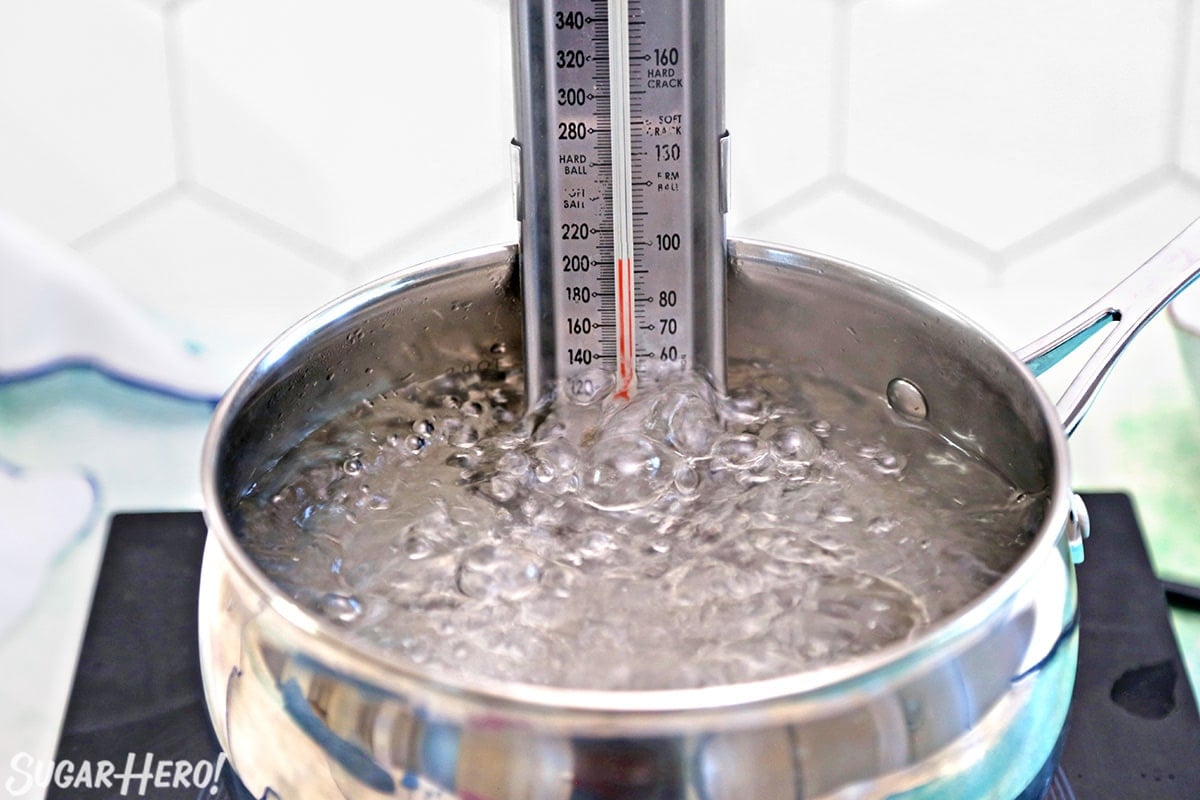
The High Altitude Thermometer Test
Procedure:
- Fill a medium saucepan with 3-4 inches of water. Bring the water to a rolling boil, and let it boil for 2-3 minutes before inserting your thermometer.
- Insert your thermometer into the pot of boiling water, making sure that the bulb is fully submerged, but not touching the bottom or sides of the pan, since this can give you an inaccurate reading.
- Keep the thermometer in the boiling water for one minute, then check the temperature. (Some digital thermometers can give a near-instant reading, but mercury thermometers usually need more time to come to temperature.)
- If you are using a mercury thermometer, make sure you are at eye level with the temperature markings so you get an accurate reading.
Calculation:
At sea level, water boils at 212° F, or 100° C. Take note of your thermometer’s boiling water reading, and calculate the difference between that and 212° F. This is your temperature adjustment, and you should use it whenever candy recipes call for a specific temperature.
Example: if your thermometer displays 207° F in boiling water, that is 5 degrees less than 212° F. You now know that you need to subtract 5 degrees from your desired temperature outcome when you use that thermometer. So if a candy recipes calls for the candy to be cooked to 245° F, you should only cook it to 240° F.
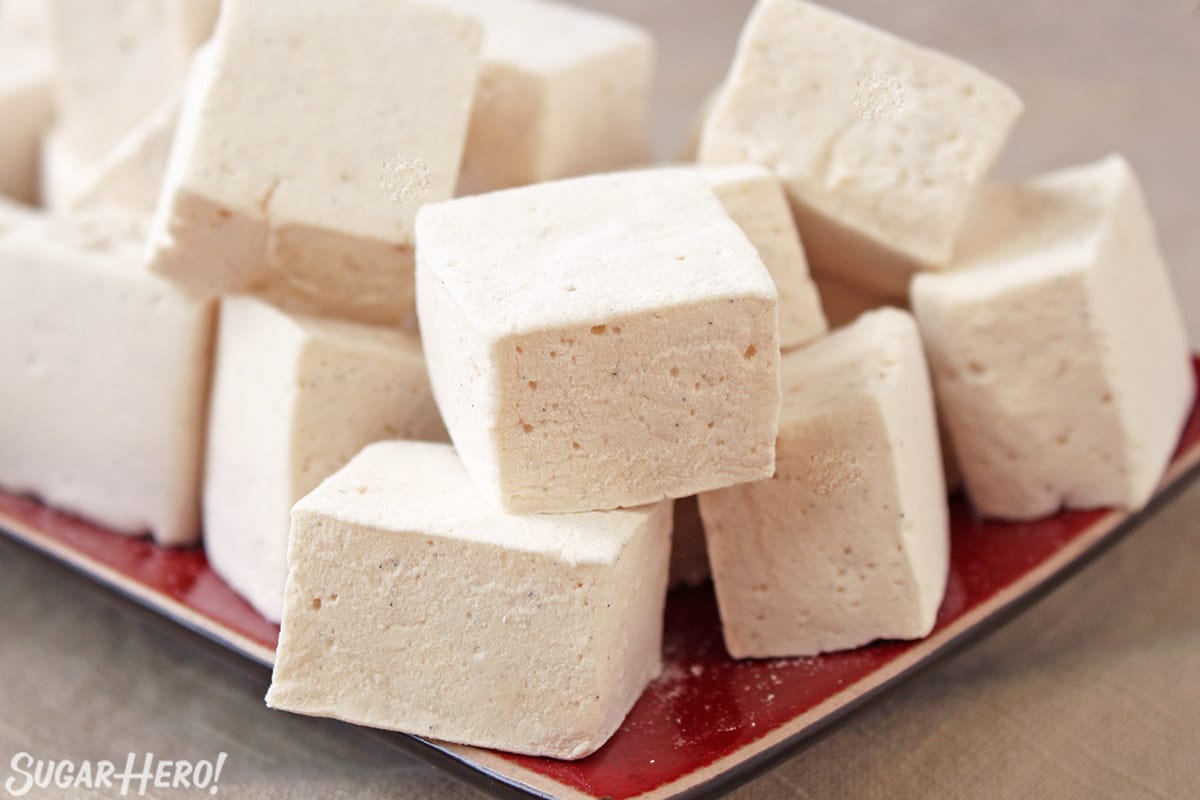
💡 Tips and FAQs
- It’s not enough to just do the thermometer test once. Over time, thermometers can become less accurate, so it’s important to test your thermometer regularly and see if your temperature adjustment number has changed.
- If you find yourself getting wildly different numbers from test to test, or if your number is very far off from the formula estimation, test it several times in a row and see if you get consistent readings. If you don’t, it is probably time for a new thermometer.
Graininess indicates the presence of sugar crystals in your candy. Crystallization can be avoided by ensuring you’re dissolving the sugar fully before the water comes to a boil, and brushing down the sides of your pan with a wet pastry brush so sugar crystals can’t cling to the pan.
Yes, but always adjust for temperature and consider other high-altitude factors. Some candy recipes might require more tweaking than others. Delicate candies like nougat might need more adjustments than hard candies.
A good quality and calibrated thermometer is crucial. Other tools remain the same.
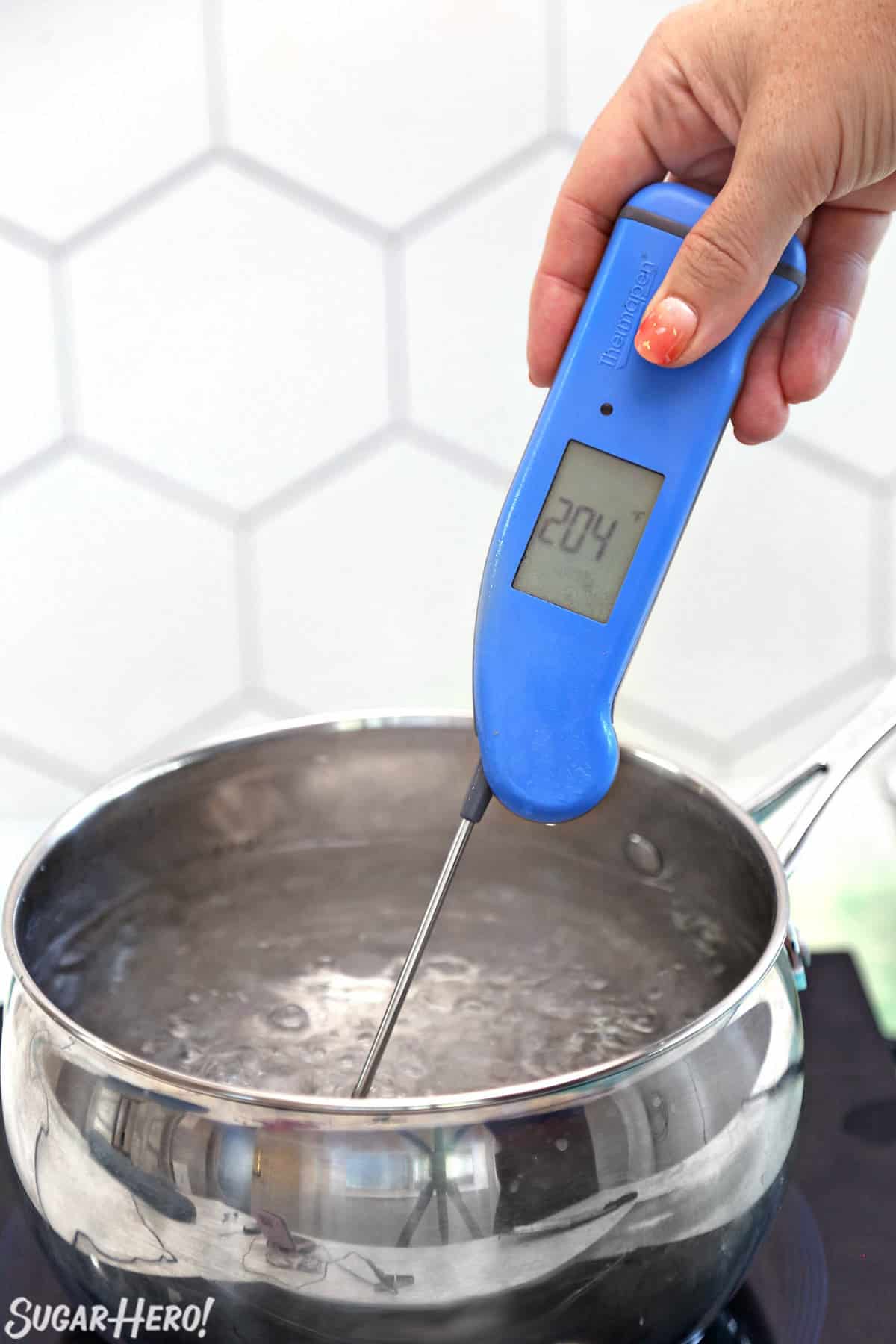
(You can see my water boils well below 212° F, because I live at a higher altitude.)
High altitude living has its share of low points, but bad candy doesn’t have to be one of them. Conquering the art of candy making at high altitudes is no small feat, but if you embrace the challenge and make the necessary adjustments, your candy skills can soar even higher than your elevation.
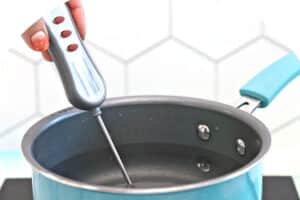
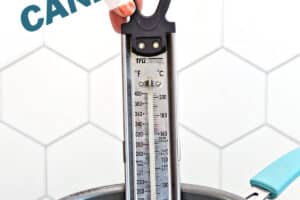
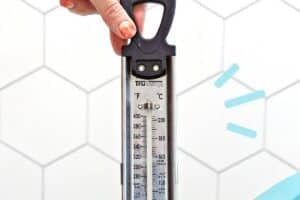
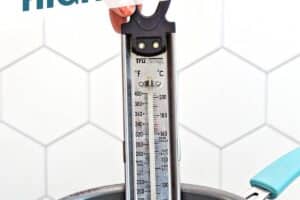
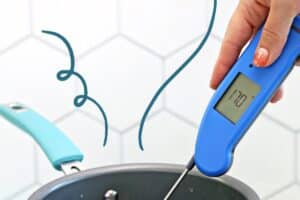
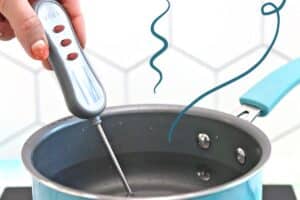
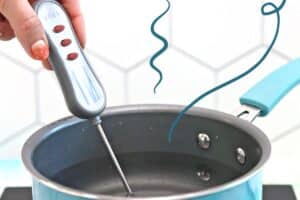

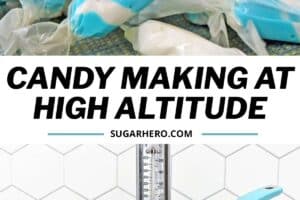

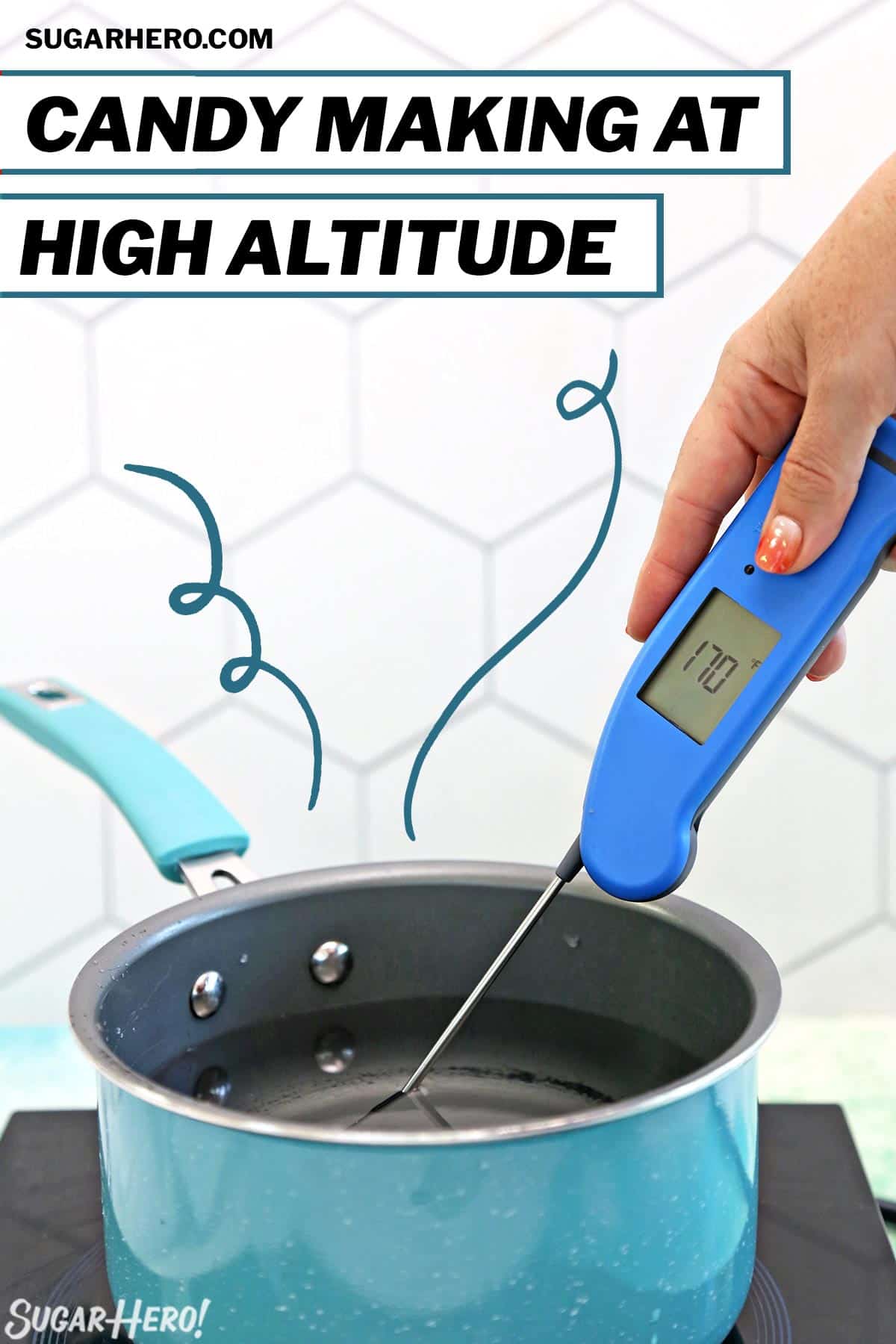
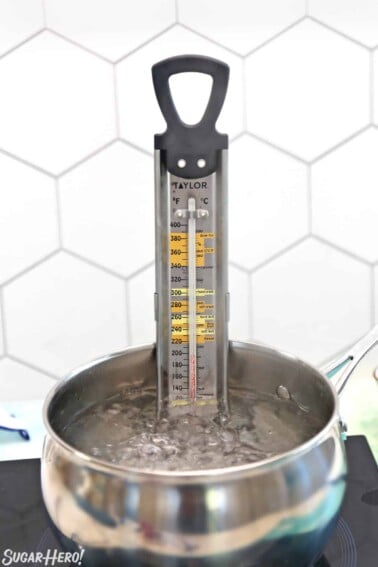
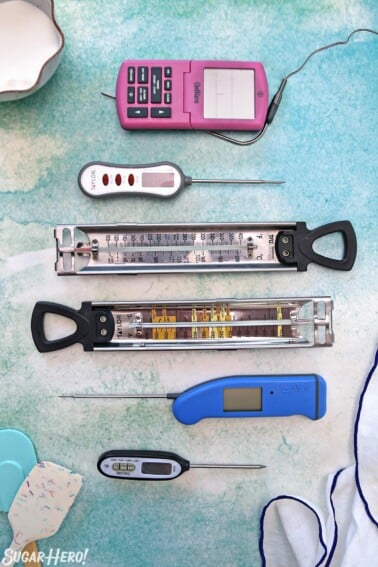
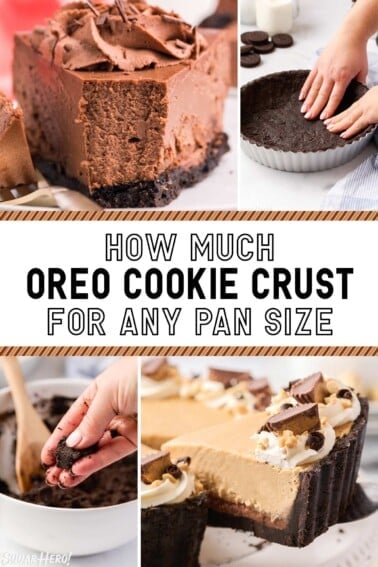
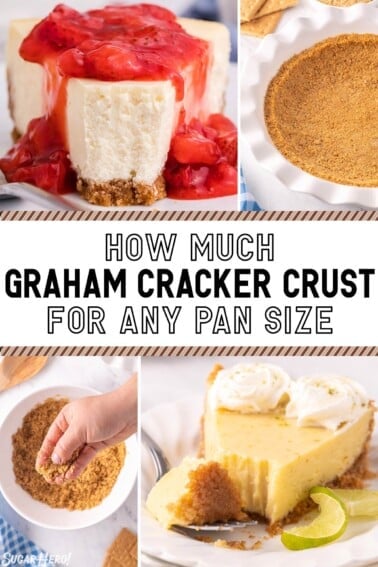












I’m having an issue with making English Toffee. I have made this for years but have just moved to Las Vegas and I cannot get the English Toffee to brown up. It just gets foamy and sugary. Can you please tell me how to fix this? Please help.
Hi Chris, I’d be happy to help you troubleshoot this. Can you share the recipe you’re using? When you say “foamy and sugary,” do you mean it develops sugar crystals during the cooking process? Or something else? Assuming you are talking about sugar crystals, crystallization is a common problem in a lot of toffee/caramel recipes, and can usually be avoided with some recipe/behavior modifications. One thing that helps prevent crystallization is using either an acid (like a bit of lemon juice, vinegar, or baking soda) in the recipe, or an invert sugar like corn syrup or glucose syrup. If your recipe doesn’t contain any of these, crystallization is much more likely to occur. Additionally, I always recommend brushing down the sides of the pan with a wet pastry brush to prevent sugar crystals from clinging on to the sides and re-crystalizing the mix. And finally, avoid stirring the candy once it comes to a boil – agitating the mixture is much more likely to introduce sugar crystals.
Re the toffee not browning, are you using a candy thermometer? What temperature are you cooking the sugar to? Most toffee recipes call for a very high temp (+/- 300F) and at that point sugar does start to caramelize – if you are cooking it this high and not seeing browning, what are you seeing? If you could provide me with a few more details I can hopefully be more specific with my suggestions.
The last thing I will say is to look at the ingredients & equipment you’re using. Is your stove significantly different than what you had before? For example, could it be that the “medium” heat you used to use is different than the “medium” heat your current stove provides? As for ingredients, different areas sometimes carry different brands – are you using the same brands you used to? A change in butter or sugar brand could be the reason behind disappointing candy. For sugar, I always recommend C&H or Domino brand – they are made with cane sugar, unlike a lot of store brands that are made with beet sugar or a blend. I’ve found in my experience that beet sugar is a lot more unpredictable, but cane sugar gives me very consistent results. Similarly, with butter, some brands have a lot more water than others, which can really affect the texture of your candy. So take a look at ingredients and see if you can spot any changes there.
Hi my friend! I want to say that this post is awesome, great written and include almost all important infos. I¦d like to see extra posts like this .
I live at 6200′ and tried making licorice caramels last Christmas. I followed the recipe, but the caramel never got hard. I put mixture back in pan and boiled it again. It finally set up and was chewy, and not sticky. Months later when I found some caramels they were as hard as rocks. This recipe is really good, so I would love to know how to make it at high altitude. My notes are included at bottom of recipe, but not sure it was the right solution.
I read your article about boiling at a lower temperature, but will this really make caramel set up.
LICORICE CARAMELS
½ cup water
2 cups sugar
1 (14 oz) can sweetened condensed milk
1 cup light corn syrup
3/4 cup salted butter (1½ sticks)
2 tsp anise extract
½ tsp black food coloring paste (optional)
¼ tsp vanilla extract
¼ tsp salt
Lightly** butter an 8×8 or 9×9 inch pan and set aside.
In a heavy-bottomed 4-quart saucepan, combine the water, sugar, condensed milk, corn syrup and butter. Bring the mixture to a boil over medium heat, stirring constantly with a heat-resistant rubber spatula. Clip candy thermometer to the side of the pan, ensuring that the tip of the thermometer isn’t touching the bottom of the pan and is inserted at lease 1-2 inches into the liquid (or according to your thermometer’s directions).
Continue stirring gently while the mixture boils and cooks, until the caramel reach 242º-244º F *. If the caramel seems to be scorching on the bottom of the pan, moderate the heat to a lower temperature. *You can also test the caramels using a spoon and dropping a pea-sized amount of the hot caramel into cold water. If the cooled piece of caramel is firm but not hard, the caramel is properly cooked.
Remove the pot from the heat and stir in the anise extract, food coloring, vanilla, and salt. Pour the caramels into the prepared pan and allow to cool completely to room temperature, at least 2 hours.
When cool, remove the sheet of caramel from the pan. Cut the caramel into pieces using a large knife. Wrap each caramel square in a bit of wax paper, twisting the ends to secure. Makes about 60 pieces.
NOTES: Anise Extract – use pure anise extract, not imitation.
Food Coloring – use paste/gel not liquid – gives the caramels a look to match flavor.
MY NOTES: * High Altitude: Cook to at least 250º F and drop in cold water to make sure caramel is firm enough. This is a must. I had to cook it 3 times to get it right/firm.
** I had trouble getting caramel out of pan, wax paper didn’t work, parchment paper may work better or just use more butter on the pan.
Hi Carol! There are a lot of variables that go into cooking and baking at high altitude – as I’m sure you know, living at 6200 ft! I have a couple suggestions and thoughts about your problem. I think what would help you most is testing your candy thermometer in boiling water before beginning. Over time, thermometers can be come less accurate, and even new thermometers can be mis-calibrated.
I would first recommend bringing a pot of water to a rolling boil, then inserting your thermometer and leaving it in for 1-2 minutes, then taking a reading. At sea level, an accurate thermometer should read 212* F. At 6200 ft, an accurate thermometer should read 200* F. (This is because the boiling point of water is lower at higher altitudes, and the general formula is to subtract 2* for every 1000 ft above sea level). Your thermometer may not read 200 F, and that’s okay too – it just means it’s not calibrated accurately. No matter what it says, you can use this info to figure out what temperature adjustment you need to make. For instance, if your thermometer reads 204 F, this means it is reading 8 degrees below 212, and you should subtract 8 degrees from your target temperature. If your recipe calls for cooking to 242, then you should cook it to 234 and test it then. If your thermometer reads 198* when boiling, that is a difference of 14* from 212, and you should subtract 14* from your target temperature. Does that make sense?
So my first thought is perhaps your thermometer was not accurate and that messed with your final result, irrespective of altitude changes.
My second thought is that 242* is a little on the low side for caramels. It’s certainly within the right range, but I usually consider 242 – 248* F to produce caramels that are soft and smooth, and 250-255* to produce firm but not hard caramels. It may be that this recipe is designed to produce a very soft caramel and your personal preference is for one a little firmer, so you needed to cook it more – does that make sense?
Testing the sugar syrup with ice water was absolutely the right call, and is going to get you the best results, so well done there. So many things can influence candy making – the size of the pan you use and how thick the bottom is, the type of ingredients (granulated sugar can be made from cane, beets, or a mix, and that can change things!), the type of butter (some brands have more water, some more fat)…there really is an endless list of variables, so being adaptable and testing while boiling is the best way to make sure you’ll be happy with the final texture.
So, to sum up, if you were to try this again, I would first do the boiling water test and see what your personal temperature adjustment will be. Then as you start to reach that temperature, check a blob of candy in ice water periodically until it’s your personal preferred texture.
A couple final thoughts- you mentioned the caramels were rock-hard several months later – this is not unusual, since homemade candy doesn’t have the same kind of preservatives store-bought candies do. They’re best consumed within a month or so of making them. And I love using non-stick foil for sticky candies. I will often spray it with nonstick spray for double insurance, but even when I forget, the nonstick surface is AMAZING and even the stickiest things release well from it! You can usually find it in stores next to the regular foil, wax paper, etc.
Hope this helps, please keep us posted if you give them a try again!